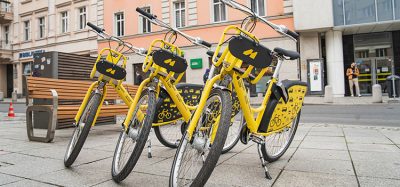Urban transport emissions can be reduced by over 90% by 2030s, says new report
- Like
- Digg
- Del
- Tumblr
- VKontakte
- Buffer
- Love This
- Odnoklassniki
- Meneame
- Blogger
- Amazon
- Yahoo Mail
- Gmail
- AOL
- Newsvine
- HackerNews
- Evernote
- MySpace
- Mail.ru
- Viadeo
- Line
- Comments
- Yummly
- SMS
- Viber
- Telegram
- Subscribe
- Skype
- Facebook Messenger
- Kakao
- LiveJournal
- Yammer
- Edgar
- Fintel
- Mix
- Instapaper
- Copy Link
Posted: 14 March 2024 | Intelligent Transport | No comments yet
According to a report by Clean Cities, the policies which will be most required to reduce transport emissions are already well-known to policy makers.


New modelling launched by Clean Cities has shown that, if city leaders swiftly implement the most effective decarbonisation policies, carbon emissions from urban transport can be reduced by over 90% in European cities by the 2030s.
The key takeaway from this first-of-its-kind study modelling five cities from different parts of Europe (Madrid, Greater Manchester, Milan, Brussels and Warsaw) is that the policies which will be most required to reduce transport emissions are already well-known to policy makers. They include greening urban logistics fleets, expanding cycling infrastructure, introducing low or zero-emission zones (LEZ/ZEZ), greening the public transport network and introducing traffic calming measures.
The study, entitled (E)Mission Zero, models four different scenarios: prioritising active and collective transport; electrification; both of these together; and a high-ambition scenario that takes cities close to zero-emission mobility. In this final scenario, city leaders would need to go as far as possible on implementing zero-emission zones, switching the vehicle fleet to electric and overhauling urban logistics services.
If this scenario is achieved, the effect on energy consumption of urban transport would be striking – the combination of electrification, reduced car use and a shift to more energy-efficient modes of transport (such as active travel and public transport) leads to a two-thirds reduction in energy use for urban transport.
The report comes just after the European Commission (EC) said that the bloc should reduce its carbon emissions by at least 90% (on 1990 levels) by 2040[3]. This includes an 84% reduction in emissions from domestic transport (on 2015 levels). A formal decision on this proposal will be taken after the European elections that are taking place in June 2024. Clean Cities’ (E)Mission: Zero report is a key part of the puzzle, as it provides input into this debate by demonstrating the feasibility of the suggested target in cities and robust evidence for the impact of different policy options.
Barbara Stoll, Senior Director of the Clean Cities Campaign, said: “This first-of-its-kind analysis shows that we can absolutely create liveable, healthy and climate-friendly cities without reinventing the wheel. The solutions exist for city leaders to act now and, if they do, they will cut air pollution, reduce fuel bills and free up more space for communities to connect. This is a real ‘Yes, we can’ moment for cities.”
In addition to the reduction in carbon emissions, which will help each city in its goal of securing a stable climate for future generations, there are a range of co-benefits associated with decarbonisation. The model suggests that, in all the cities, roadside emissions of harmful nitrogen oxides – the gases that were at the centre of the Dieselgate scandal – will be cut by over 90% in the zero-emission scenario, meaning that the number of deaths from conditions linked to air pollution will decrease. There are also significant beneficial impacts on road safety[1][2][3], with road traffic deaths estimated to decrease by, on average, a third across the cities[4]. In total, a cost-benefit analysis showed a net saving for almost all scenarios in the five cities.
References
- Regulation (EU) 2021/1119 of the European Parliament and of the Council of 30 June 2021 establishing the framework for achieving climate neutrality and amending Regulations (EC) No 401/2009 and (EU) 2018/1999 (“European Climate Law”). , Regulation (EU) 2021/1119 (2021). https://eur-lex.europa.eu/legal-content/EN/TXT/?uri=CELEX:32021R1119
- United Nations Environment Programme. (2022). Emissions Gap Report 2022: The Closing Window — Climate crisis calls for rapid transformation of societies. https://www.unep.org/emissions-gap-report-2022
- EEA. (2022). High time to shift gear in transport sector. https://www.eea.europa.eu/signals-archived/signals-2022/articles/high-time-to-shiftgear
- Eurostat. (2022). Urban-rural Europe – introduction. https://ec.europa.eu/eurostat/statistics-explained/index.php?title=Urban-rural_Europe_-_introduction#Area_and_population
Related topics
Air Quality, Alternative Power, Infrastructure & Urban Planning, Modal shift, Public Transport, Sustainable Urban Transport, Traffic Management, Transport Governance & Policy
Related cities
Brussels, Greater Manchester, Madrid, Milan, Warsaw
Related countries
Belgium, Italy, Poland, Spain, United Kingdom
Related organisations
Clean Cities Campaign, European Commission (EC)
Related people
Barbara Stoll








